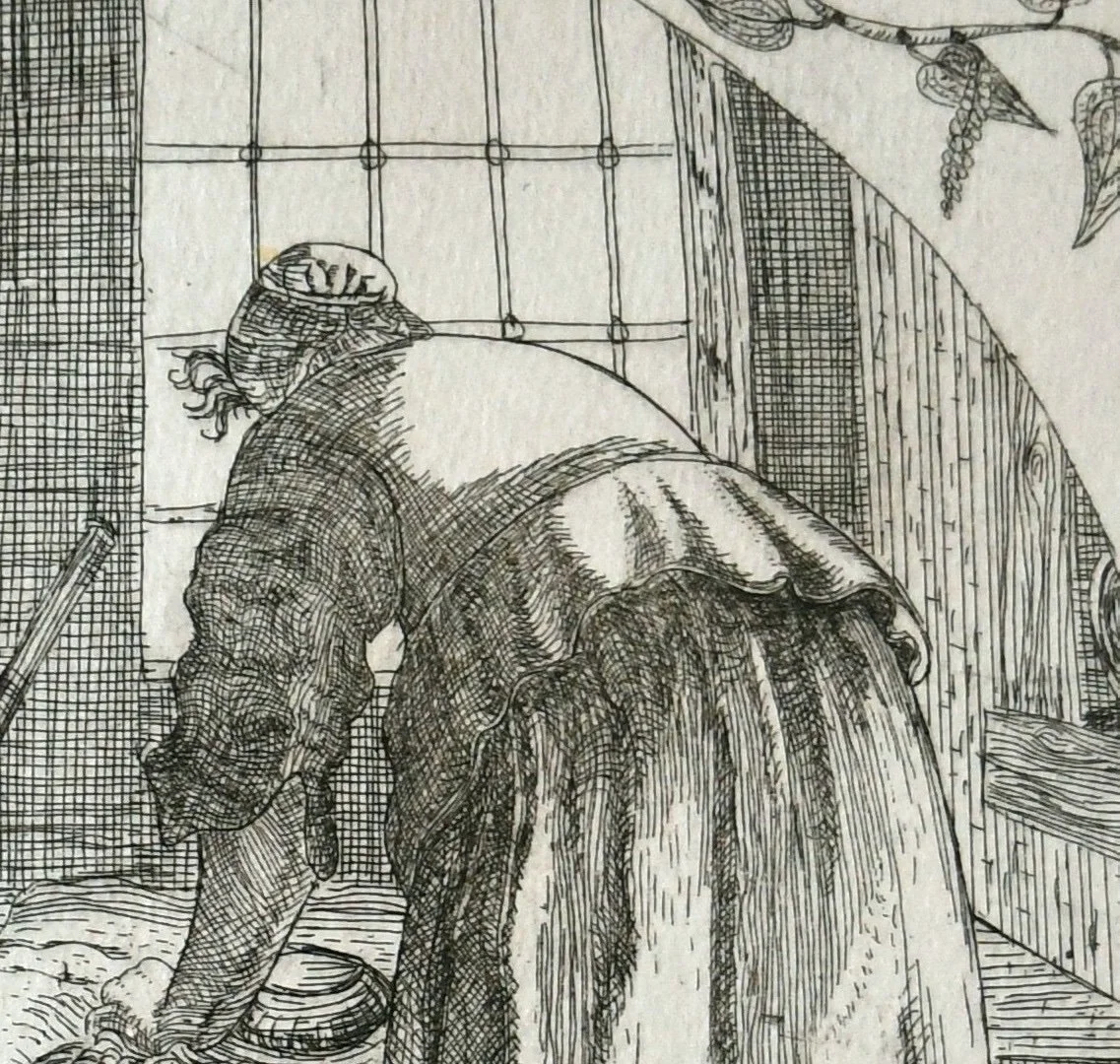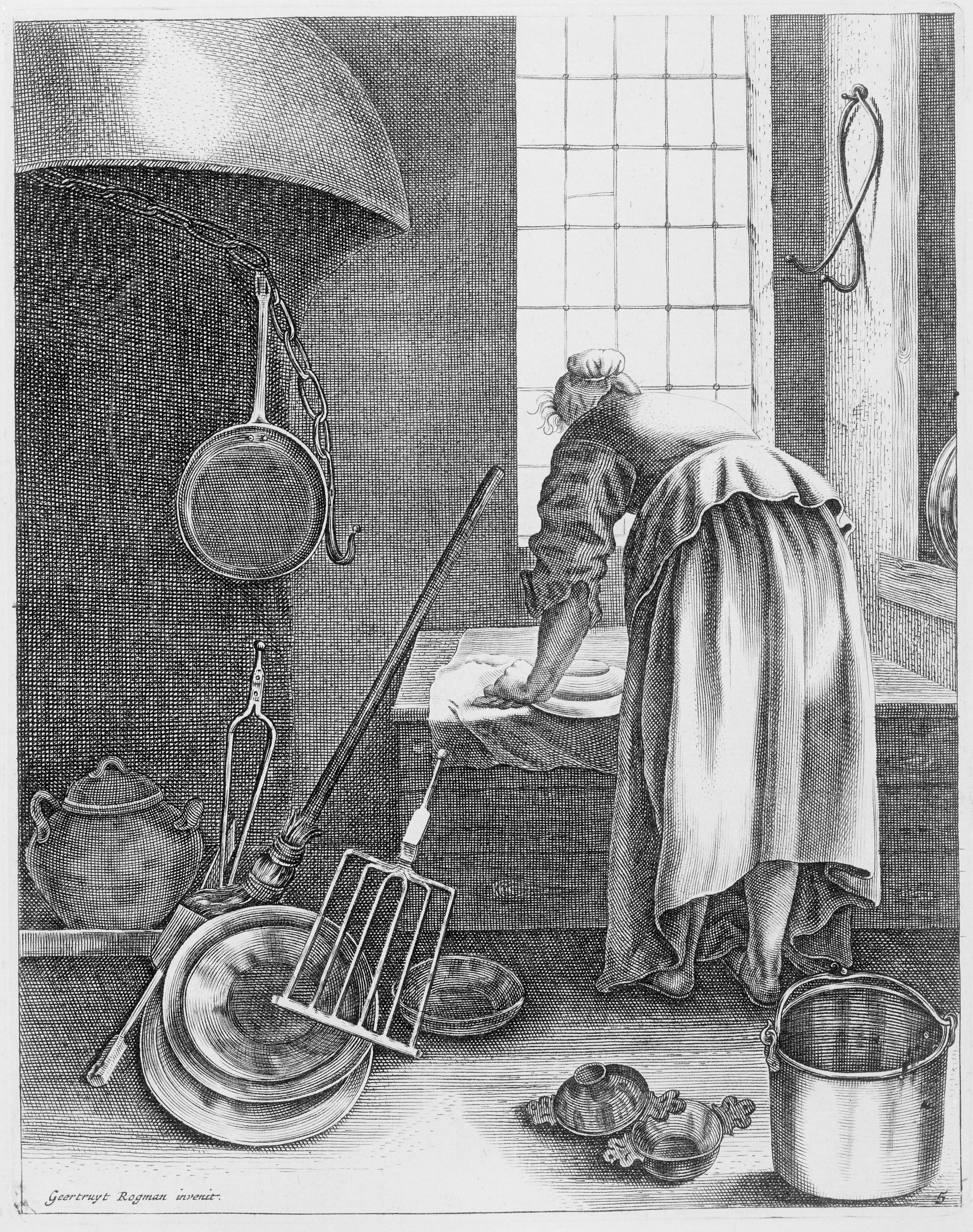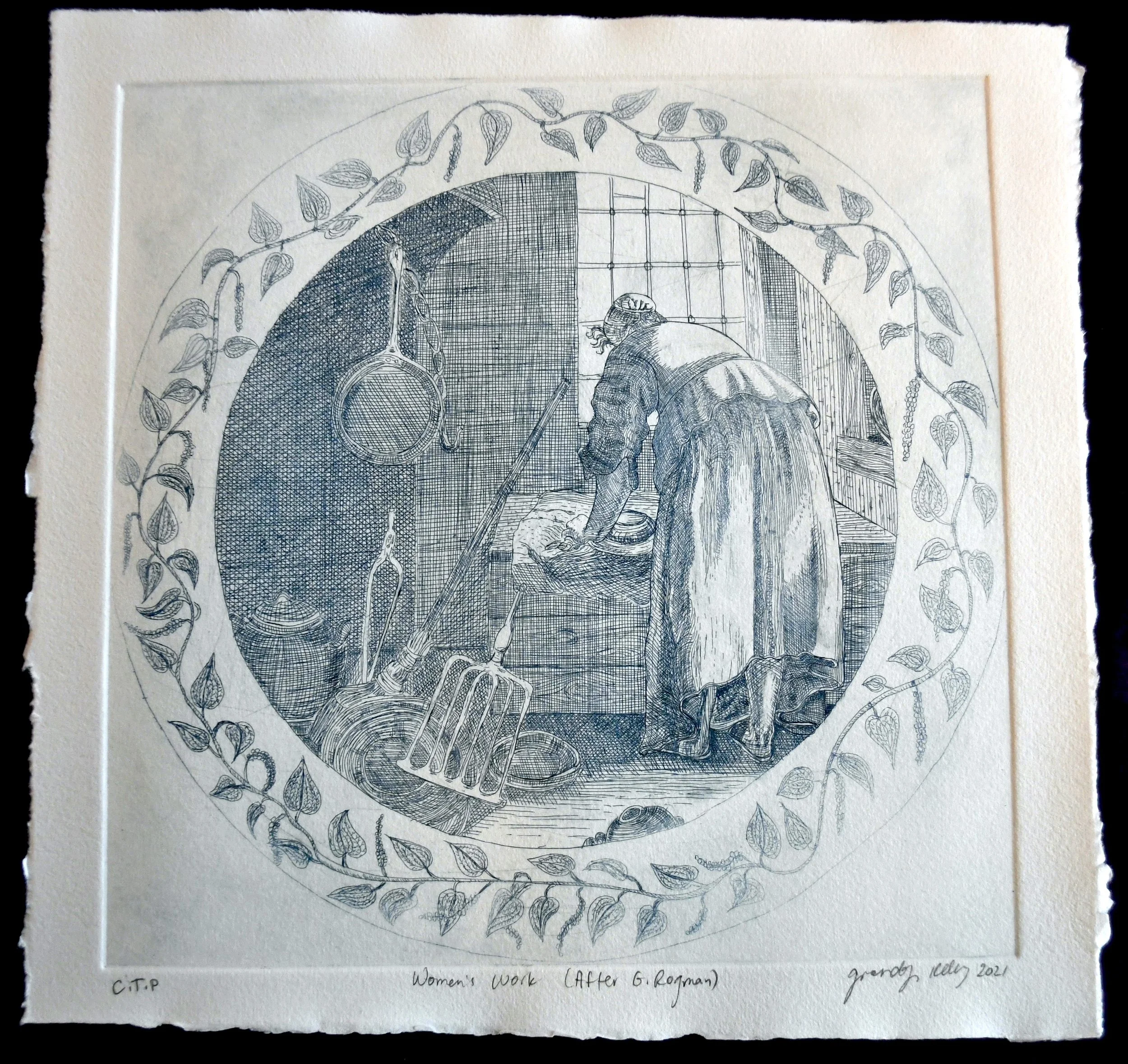Women’s Work
Women’s Work (After Geertruyt Rogman)
What is ‘women’s work’? On the one hand, there are the categories of domestic labor that are stereotypically and historically associated with women. On the other there are all the kinds of work women actually do and have done, both in the past and today.
In the 1640’s Geertruyt Rogman (also spelled Geertruydt Roghman, and several other alternative spellings) was an artist and engraver, and also, a woman. She did a series of five prints representing women’s work, all showing domestic tasks including, cleaning, sewing, spinning.
Rogman represents women working, not in a way that is romaticized, but rather, an interior view, an almost intimate view of the ordinary and mundane tasks assigned to women in her time, perhaps even in her own home. At the same time, Geertuyt herself was a printmaker, engraver, artist, doing a kind of work that was not associated with women, and a kind of work that women were rarely given the opportunity to do.
This contradiction fascinates and inspires me, not only because of what Geertruyt Rogman accomplished as an artist in her own life, but because her work illustrates and illuminates women, and their work in her historical moment.
In my own work, I aspire to also show women and their labor, as it is, not romanticized, not exoticized, but real. And the kinds of work that women do, including the domestic labor that most women still do, despite also doing the kinds of labor that are still often invisible, not because women aren’t doing them, but because we assume that those kinds of labor are done by men.
Women’s Work (after G. Rogman), 2021
Note: I spell her name is it is written on the prints themselves. Signed at the bottom of the prints it says “Geertruyt Rogman invenit et sculpsit”. Invenit comes from Latin meaning she devised or created it. Sculpsit, also from Latin, means she has carved or engraved it.





